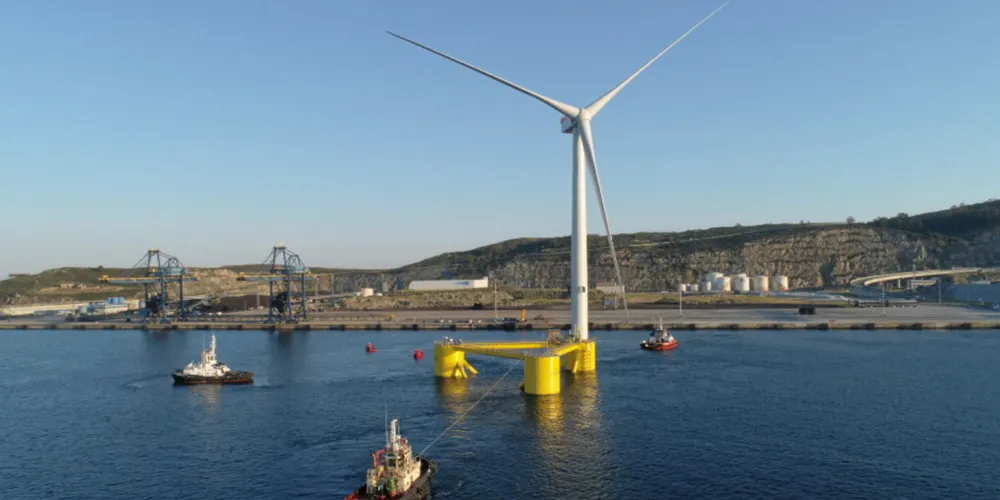'Timeline tight' | Huge £4bn spend to ready UK ports for gigascale floating wind build: taskforce
Development of 37GW of deepwater projects in the North and Celtic seas by 2040 hinges on massive capital infusion into coastal industrial infrastrcture, new report warns

Construction of the tens of gigawatts of floating wind plant off Britain’s coastlines currently planned will require that as many as 11 ports are “transformed as fast as possible” into next-generation industrial hubs if Britain is to capitalise on planned lead-off development of deepwater sites in the North and Celtic seas, a high-level taskforce has flagged.
“There is a huge opportunity for the UK to show international leadership in in the race to deploy this new technology at scale, however it is clear from our own dialogue with developers and ports that this must go hand in hand with the rapid establishment of a new supply chain and upgrading ports,” said Nicola Clay, head of new ventures at the UK Crown Estate, which along with RenewableUK, Scottish Renewables and Crown Estate Scotland sponsored the report.
“This will require collaboration, confidence and investment by all involved if the UK is to build the foundations for this industry to truly thrive and realise the full range of benefits on offer.”
“At the moment there are no port facilities in this country which are fit for the mass deployment of floating wind, so we need to start revitalising them now as new industrial hubs, so that we’re ready for this new sector to take off at scale by 2030. The timeline is tight and we will only be able to deliver on our ambition if we take action promptly and decisively.”
Colin Maciver, head of offshore wind development for Crown Estate Scotland, said: “Joint working between ports, industry and governmental bodies, is essential to unlock the full potential of offshore wind.
“Ensuring these ambitions are fully realised presents a considerable challenge, pointing to the 2022 ScotWind leasing round, which included 14 deepwater projects among 20 totaling 27.6GW of future plant capacity.”
Generation of £26.6bn in economic activity
Building the called-for coastal industrial infrastructure would create an estimated £26.6bn in economic activity in the UK, with calculations that every £1 invested in British port facilities would generate up to £4.30 of added value to the country’s economy, and lead, by 2040, to the floating wind industry supporting 45,000 domestic jobs, according to the report, which was produced by a taskforce made up of representatives from the UK, Scottish and Welsh governments, the Northern Ireland executive, and major offshore wind and port developers.
Heyworth said: “The UK has the largest pipeline of floating wind projects in the world [and] four-fifths of the world’s potential offshore wind resources is in deeper waters, so floating wind is a key technology which industry and government must ramp up now, so that we can maintain our global lead in the decades ahead”.
Emma Harrick, head of energy transition and supply chain at Scottish Renewables, said: “Time is of the essence and it is vital that the Scottish and UK governments invest in Scotland’s ports to build the essential infrastructure we need to kickstart the industry.
Two floating wind farms, the 50MW Kincardine and the 30MW Hywind Scotland are currently operating off the UK.
While industry generally welcomed the report, platform developer BW Ideol flagged the study had not fully considered the physical dimensions of “all” designs currently heading for the water in scoping out the port requirements.
“There is however one major issue [that] needs to urgently [be] addressed and corrected: All floaters are not alike and are not as infrastructure hungry as their counterparts,” said BW Ideol chief commercial officer Bruno Geschier, noting that his company’s ‘damping pool’ concept did “not fit into the floating substructure parameters used for this report”.
“I fear these parameters are quite far off the dimensions of our solution [or some others]. Dimensional differences are quite game changing and deserve a careful look when selecting the proper technology as they very favourably impact a project's delivery and O&M [operation and maintenance] options, especially when trying to maximise local value creation,” he said.